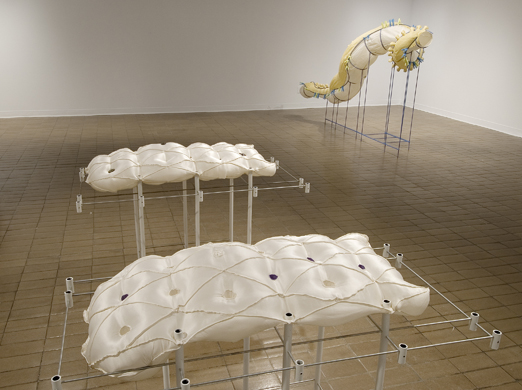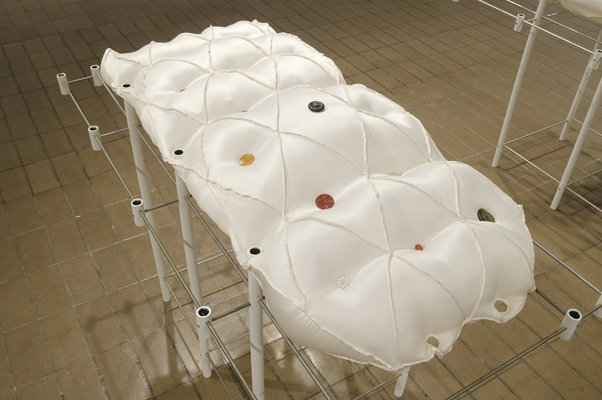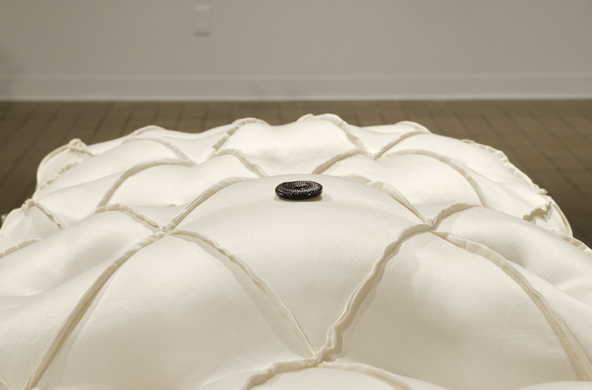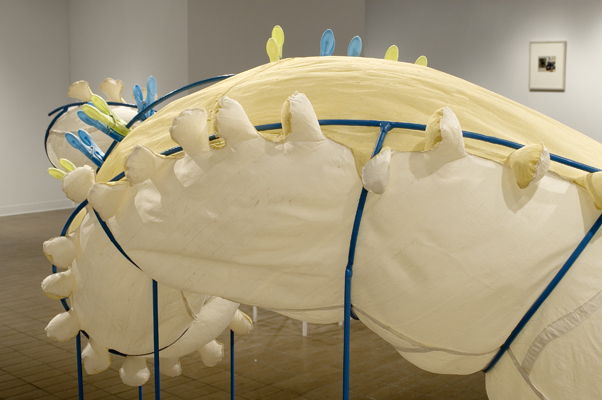2005 | Plein Sud Centre, Longueuil, Quebec, Canada



Simply Swell, 2005, steel, silk, sugar, and clothes pegs , 1,50 x 3,20 x 0,50 m


Photos © Guy l’Heureux
In the Salt in the Bed exhibition, Stephen Schofield has chosen to bring together sculptures and drawings that pursue many of the themes that have marked his production in recent years. Once again, the body plays a central role in the artist’s work. With great simplicity of means, he attempts to identify all the complexity of the meaning of the work. How to express the pleasures of the body, its sufferings and its moving precariousness? With Stephen Schofield, this questioning involves an exploration of the domestic universe, a privileged place of childhood and play.
Three sculptures occupy the exhibition space. The first, initially inspired by a drawing of sheets flapping in the wind on a clothesline, consists of a horizontal metal structure that barely contains an organic form made of silk. Filled with air and provided with multiple appendages, the form twists, bends and overflows from its shackles. A tension is thus created between the rigid and the soft, the architectural and the organic, the metal and the fabric giving rise to a multitude of readings. The sheet becomes flesh, the body seeks to free itself. Unless it’s a serpent, a dragon, or some other monster that has arisen from the world of childhood.
Further on, two small mattresses, also inflated with air, are placed on a metal support. The surface of one is covered with buttons while that of the other is marked with multiple holes. By its bareness, this work evokes images of intimacy, loneliness and vulnerability.
A third sculpture of a black organza, the most abstract, is nonetheless made from a shirt pattern filled with sand. The heaviness of this material pulls the form down and makes us think of an hourglass body that underlines the relentless flight of time.
Text from the communiqué of the exhibition Salt in the Bed at Plein Sud, Longueuil, November 5 – December 18 2005